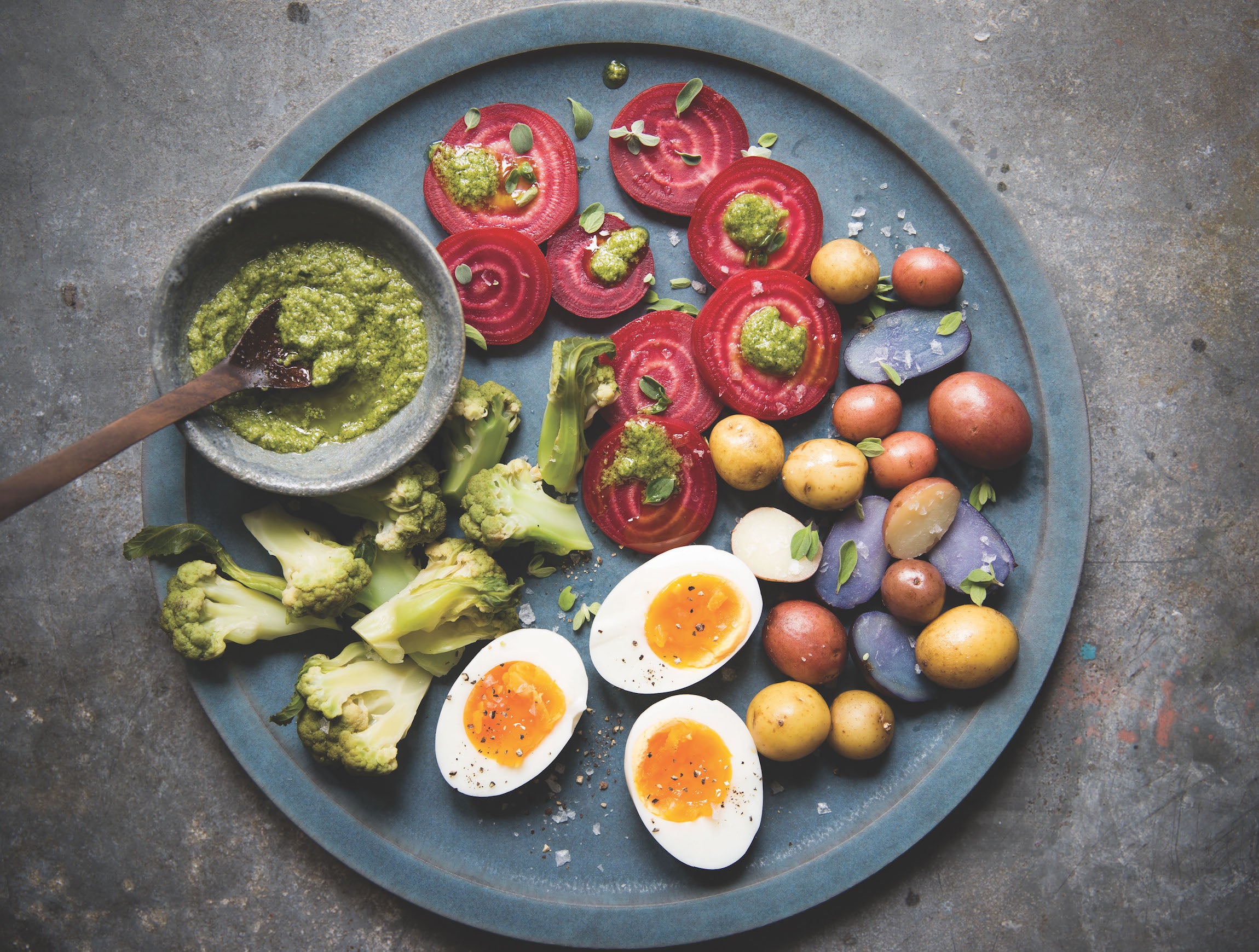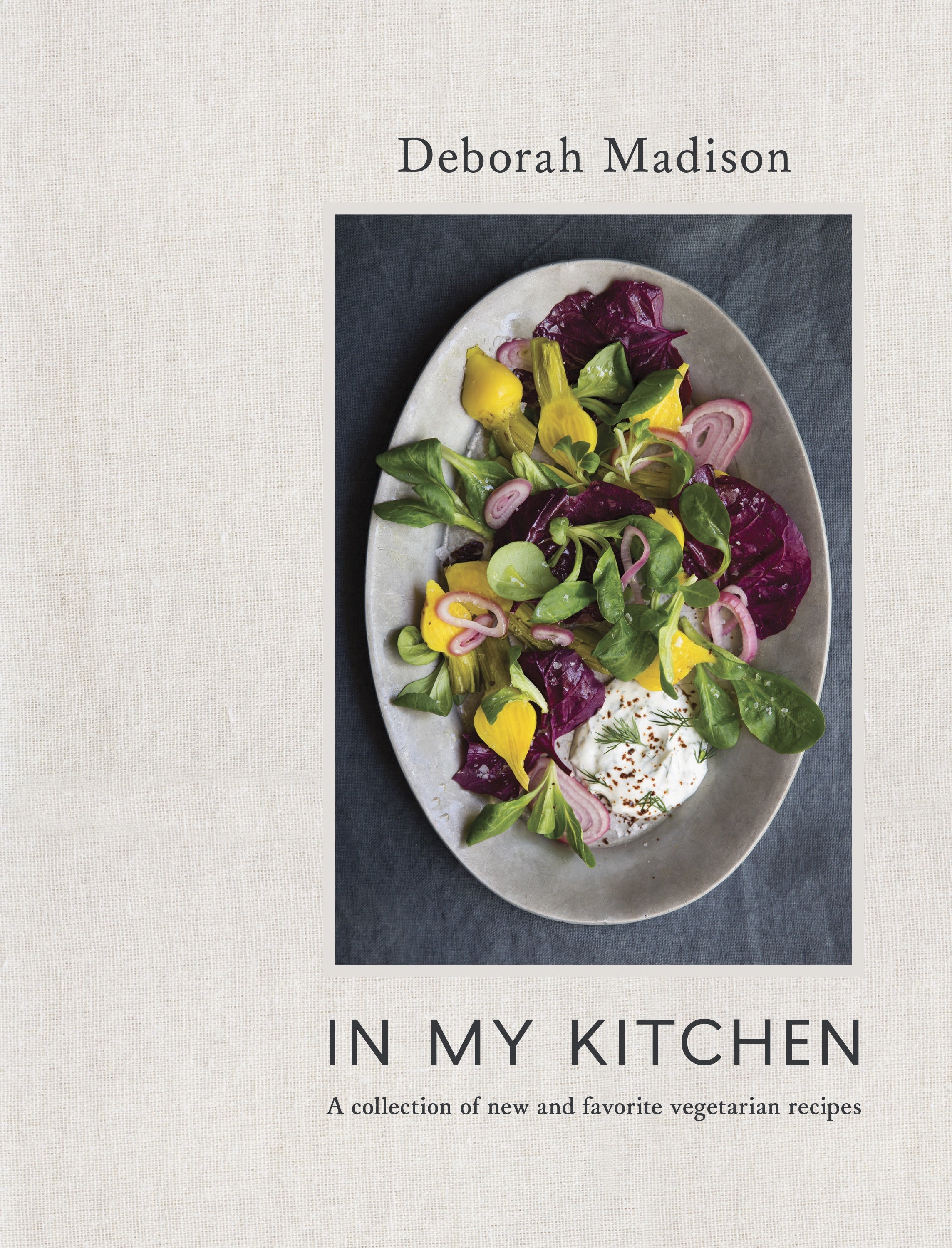Deborah Madison Wants You to Use More Vinegar

If you’ve ever brought a pot of chili back from the brink of being inedibly spicy, woken up a snoozy lentil soup, or given new life to a one-note sauce, then you’re probably familiar with the power of vinegar. Sure, it gets the job done in vinaigrettes and pickles and coleslaws, but sometimes it shines the most when you don’t even realize you’re eating it at all. Experienced chefs know this well, using bits of vinegar to deglaze pans and round out finished dishes, but for the home cook, it can be a little more difficult to put your finger on the difference that the ingredient makes.
“It’s kind of like when you get your eyebrows plucked,” says veteran cookbook author and vinegar evangelist Deborah Madison. “Suddenly you feel put together. Vinegar is kind of a similar thing. It can do a lot of things that we’re not necessarily aware of.”
In her newest book, In My Kitchen, Madison teaches us how to coax flavor out of small, cared-for roots and greens from the garden, but also out of the grocery dregs in the back of the refrigerator. If you’ve just harvested a bushel of golden beets and purple orach, Madison has a salad for you. If you have a patch of marjoram in the yard and some capers and olives in the pantry, Madison has a briny, sharp salsa verde for you. If your refrigerator has been scraped clean of everything but a few eggs, a stick of butter, and an onion, Madison has a rich, savory frittata for you. And what do all of these dishes have in common? Vinegar.
Madison told me that she has no fewer than a dozen vinegars in her kitchen at the moment, and her love for them runs deep in the book. She sprinkles red wine vinegar over roasted potatoes, bathes shallots in tarragon vinegar for an egg salad, and bolsters romesco sauce with sharp sherry vinegar. (Though this particular bit of wisdom didn’t make it into the book, she also loves a few drops of rich balsamic vinegar on a scoop of caramel ice cream.) “Often, when you taste a finished soup or stew and think it needs salt,” she writes, “what it really needs is just a few drops of vinegar or lemon juice to bring up the flavors and get them into alignment.”
In the marjoram sauce from In My Kitchen, vinegar does double duty, both softening the bread at the beginning of the recipe and tying the flavor of the herbs into the acidity of the olives and capers. The bright green sauce can be swirled into soups, mixed into pastas, or just served with simple steamed vegetables like beets. The caramelized onion frittata gets a bath once it’s cooked, in what Madison calls a “very fast little sauce”—sort of a lazier version of a beurre blanc that you will want to put on all of your egg dishes once you try it the first time. Once you slide the frittata onto the plate, you just swirl a little bit of butter and sherry vinegar around in the pan until it bubbles and emulsifies, and then pour it over the top of the frittata. You may hardly be able to taste the vinegar, but you will realize that it’s the ingredient that’s been missing from all of your frittatas until now.
Ingredients
- 4 golden beets or a mixture of golden, Chioggia, and red beets
- 1 slice country bread, crusts trimmed
- 2 tablespoons aged red wine vinegar
- 1 clove garlic, coarsely chopped
- sea salt and freshly ground pepper
- ⅓ cups marjoram leaves, stripped from their stems
- 3 tablespoons capers, drained
- ½ cups pine nuts or walnuts
- 1 cup finely chopped parsley
- 10 green olives, pitted and chopped
- ½ cups best olive oil
In her book In My Kitchen, Deborah Madison shares some of her best secrets for brightening up ordinary vegetables, like this lively herb-y take on a salsa verde.
I adore marjoram in summer sauces like this one. Basil is good, of course, but marjoram is less expected and every bit as summery. In my classes, students commonly become enthusiastic converts to this herb. Even if you live where your marjoram succumbs to the first hard frost, you can buy a few plants in late spring, tuck them in a sunny spot, and use the herb all summer. When they finally freeze, you’ll be ready to move on to rosemary, sage, and winter savory.
This sauce is so thick that it’s almost a paste. You can loosen it by adding more oil, or water if you like, but know that you can spread it as a paste on hard-cooked eggs or grilled fish. It’s phenomenally good with vegetables of all kinds—grilled leeks, sliced tomatoes, roasted cauliflower, steamed fennel, or these beets. You can also toss it with pasta and stir it into rice, or add it to summery vegetable soups and ragouts. This sauce is not difficult to make in an ample mortar with a heavy pestle, but you can also use a food processor if you prefer. I have made this without the bread for a student with celiac disease; I added more nuts for bulk, and it was fine.
- To prepare the beets, cut off all but an inch of their stems and leave the tails on so that the juices stay mostly within the beet. Rinse off any sand or mud and then steam them until tender-firm when pierced with a knife, from 25 to 40 minutes, depending on their size. Rinse to cool and then slip off the skins. Refrigerate the beets until they’re well chilled, if desired, or use them at room temperature. (Beets can be steamed days before you need them.)
- To make the sauce, put the bread on a plate and sprinkle the vinegar over it.
- Pound the garlic in a mortar with 1⁄2 teaspoon of salt until smooth, then work in the marjoram, capers, pine nuts, parsley, and olives. Pound them with the pestle until you have a coarse mash. (Alternatively, you can do this in a food processor.) Add the bread and olive oil and work until the sauce is well amalgamated. Season with pepper and taste for vinegar, adding a little more if you think it needs it. The sauce should be very thick and very green.
- Slice the beets into rounds about 3⁄8-inch thick and arrange them on a plate. Add a spoonful of the sauce to each.
Ingredients
- Caramelized Onions
- ¾ pounds white or yellow onions
- ¾ tablespoons olive oil
- 1 tablespoon sherry vinegar
- a pinch of ground cloves
- Frittata
- 3 eggs
- sea salt and freshly ground pepper
- 1 tablespoon chopped parsley
- 5 tablespoons butter
- Parmigiano-Reggiano, for grating
- 1½ tablespoons sherry vinegar
In her book In My Kitchen, Deborah Madison shares some of her best secrets for brightening up ordinary vegetables, like this frittata that’s finished with a rich, sharp sherry vinegar sauce.
Frittatas with caramelized onions have long been a favorite of mine. What makes them special is the wash of melted butter and vinegar sauce spooned over the finished dish. It’s made in the pan in just a few seconds. You can serve it whole or cut it into squares, pile it on crackers or bread, and serve as an appetizer.
Also see: Deborah Madison Wants You to Use More Vinegar
For the Caramelized Onions
- Peel the onions and halve them lengthwise, then cut each half into thirds or quarters. Slice each piece crosswise about 1/4 inch thick.
- Warm the olive oil in a medium-sized skillet, add the onions, and cook over medium heat, stirring occasionally until they begin to color. Reduce the heat to medium-low, cover the pan, and continue to cook, stirring occasionally, until they've started to color, about 20 minutes. Remove the lid and stir frequently, keeping an active eye on them to make sure they don't burn.
- When they're limp and caramel colored, raise the heat, add the vinegar, and let it reduce. Season with salt, pepper, and the cloves. Taste, and if you want a little more vinegar, add it—carefully. Sherry vinegar is strong. You can use the onions right away or refrigerate for several days.
For the Frittata
- Whisk the eggs with a few pinches of salt and some freshly ground pepper, then stir in the parsley and the caramelized onions. Heat your broiler.
- Melt 2 teaspoons of the butter in a 10-inch skillet until it’s sizzling, then add the eggs and lower the heat. Cook the eggs, covered, until they are set and golden on the bottom, about 6 minutes for a thin frittata, longer for a thick one.
- Grate a little of the cheese over the top, then slide the pan under the broiler to finish cooking. The top should be light gold and firm. Loosen the frittata and tilt it onto a plate, then return the pan to the stove and raise the heat.
- Add the remaining butter to the pan, and when it begins to foam, add the sherry vinegar. Slide the pan back and forth to emulsify the two. Stand back! The vinegar fumes are strong. When you have a sauce, pour it over the frittata and serve.



